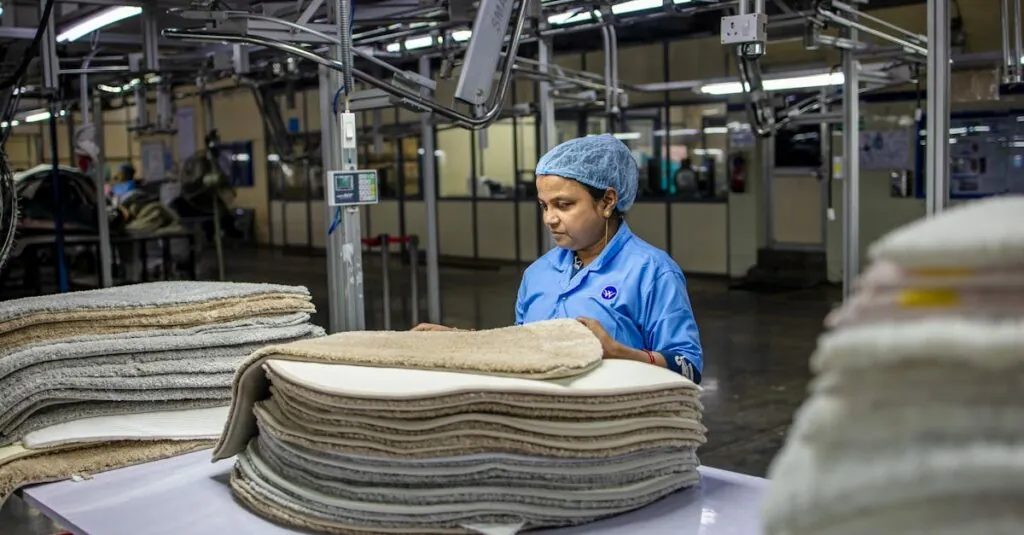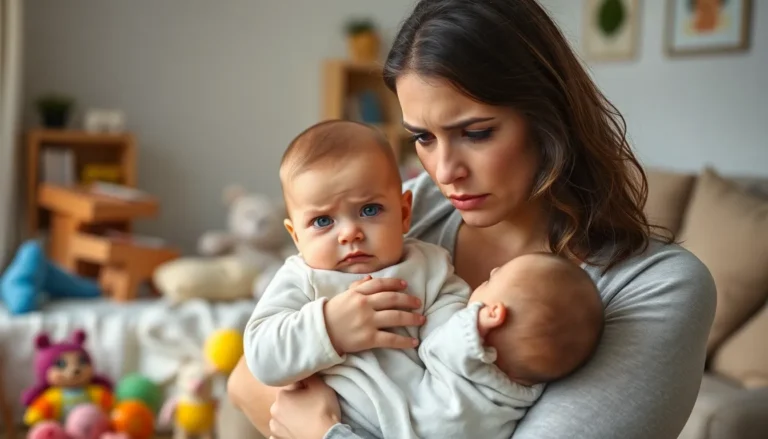Playdates can feel like a chaotic circus, complete with giggles, snacks, and the occasional wrestling match. But with a solid routine, they can transform into a delightful blend of fun and learning. Imagine a world where kids play nicely, share toys, and maybe even clean up afterward—yes, it’s possible!
Table of Contents
ToggleImportance of a Routine for Playdates
A routine provides structure, making playdates smoother and more enjoyable. Children thrive in environments where they know what to expect. Predictability allows kids to feel secure, reducing anxiety that can arise in unfamiliar settings.
Setting specific time frames for each activity helps children transition easily from one playtime activity to another. For example, allocating 30 minutes for outdoor play followed by 15 minutes of snack time can create a balanced experience. Consistency fosters cooperation among children as they learn to share time and resources effectively.
Incorporating cleanup time into the routine teaches responsibility. When children understand that tidying up is part of the playdate, they’re more likely to engage willingly. Establishing clear clean-up guidelines encourages teamwork and instills a sense of accomplishment when the job is done.
Flexibility within the routine can enhance creativity. While having a plan is crucial, allowing for spontaneous play can lead to unexpected fun. Kids may discover new interests or strengthen friendships through unstructured exploration.
A routine also promotes social skills. Building interactions into planned activities, such as group games or collaborative art projects, encourages communication and problem-solving. These shared experiences allow children to develop empathy and understanding.
Ultimately, playdates benefit greatly from a structured approach. Creating a routine ensures everyone enjoys their time together, fostering lasting memories and friendships.
Establishing a Playdate Routine
Creating a consistent routine enhances the quality of playdates. A structured approach promotes harmony and engagement among children.
Setting a Schedule
Planning specific time slots makes transitions smoother. Allocate time for outdoor play, snacks, and activities that allow for creativity. For example, dedicating 30 minutes to free play helps children bond before structured activities begin. Scheduling cleanup after playtime instills a sense of responsibility as kids learn the importance of tidying up. Sticking to a routine can reduce anxiety, making children feel secure and more willing to engage with others. Flexibility remains essential; allowing spontaneous playtime fosters imagination without disrupting the planned schedule.
Preparing the Environment
Creating a welcoming environment encourages positive interactions. Arrange a variety of toys to stimulate creativity and collaboration. For example, having a mix of building blocks, art supplies, and outdoor equipment attracts different interests. Designate specific areas for different activities, such as a quiet corner for reading or a space for active play. Safety remains a priority; ensure all play items are age-appropriate and free from hazards. Inviting children to help set up the space promotes teamwork and excitement for the upcoming activities. A well-prepared environment sets the stage for fun while nurturing friendships.
Activities to Include in the Routine
Incorporating engaging activities into a playdate routine enhances social interactions and nurtures creativity. Focus on sequence and variety to keep children entertained and learning.
Icebreaker Games
Icebreaker games encourage initial connections among children. Activities like “Simon Says” or “Duck, Duck, Goose” provide fun ways to break down shyness. These games promote laughter and movement. Children learn to listen and follow directions while interacting. Short time slots of 10 to 15 minutes work well for these activities. When kids are engaged in an icebreaker, they often feel more comfortable transitioning to other planned activities. Prioritizing icebreaker games sets a playful tone for the rest of the playdate, fostering friendships early on.
Creative Playtime
Creative playtime allows children to express themselves and collaborate. Setting up a crafting station with supplies such as colored paper, markers, and glue stimulates imagination. Open-ended activities like building with blocks or creating art projects encourage teamwork. Children can share ideas and materials, fostering communication and problem-solving skills. Dedicating 30 to 45 minutes for creative play balances structure and freedom. As kids explore their creativity, they build confidence in their abilities. Prioritizing creative playtime adds depth to the playdate, enriching interactions and experiences.
Managing Expectations
Managing expectations during playdates helps create a smoother experience for everyone involved. Clear communication and conflict resolution are essential elements in this process.
Communicating with Parents
Sharing information with parents before the playdate sets a positive tone. Discussing any specific needs, allergies, or behavioral concerns ensures everyone is on the same page. Confirming agreed-upon drop-off and pick-up times avoids confusion. Setting clear expectations regarding activities and routines informs parents about what to anticipate. Providing feedback after the playdate fosters trust and cooperation between parents. Regular updates on children’s interactions enhance understanding and build stronger relationships among caregivers.
Addressing Conflicts
Addressing conflicts promptly prevents misunderstandings and promotes a positive atmosphere. Observing interactions closely allows adults to intervene quickly when disputes arise. Encouraging children to express their feelings fosters communication and emotional development. Guiding them through problem-solving strategies teaches valuable conflict resolution skills. Discussing incidents with children after the conflict helps them reflect on their actions. Maintaining a calm demeanor as an adult reassures children, allowing them to feel secure while navigating challenges.
Adjusting the Routine as Needed
Flexibility in routines helps accommodate children’s varying needs during playdates. To create an enjoyable atmosphere, adapting schedules based on children’s interests can lead to more engagement. For instance, if children show excitement for a specific game, allowing more time for that activity boosts their satisfaction.
Observing interactions closely provides insight into necessary adjustments. Frequent check-ins with the children help gauge their comfort levels and preferences. If a particular activity sparks joy, extending that time enhances the playdate experience.
Adapting snack times may improve focus and energy levels. When children feel hungry or restless, shifting to snacks earlier can keep everyone happy and energized. Alternatively, if the group seems engaged in play, delaying snack times allows for uninterrupted fun.
Encouraging collaboration among children promotes adaptability. When conflicts arise, guiding them through problem-solving strategies fosters teamwork. Teaching them to recognize each other’s feelings also cultivates empathy and enhances relationship building.
Incorporating a variety of activities maintains excitement throughout the playdate. If children appear disengaged, switching to a different game or craft can rekindle their interest. This versatility keeps the atmosphere dynamic and engaging.
Ultimately, balancing structure with spontaneity allows playdates to flourish. Emphasizing enjoyment remains the primary goal, while maintaining a framework offers guidance. The key lies in observing, listening, and adjusting routines, ensuring children return home with cherished memories and strengthened friendships.
Conclusion
Establishing a routine for playdates transforms them into enriching experiences. With a well-defined structure, children can engage in cooperative play while developing essential social skills. A balanced approach that combines planned activities with flexibility fosters creativity and ensures everyone feels included.
By managing expectations and maintaining clear communication, parents can create a supportive environment that encourages positive interactions. Observing children closely allows for timely interventions and promotes emotional growth. Ultimately, a thoughtful playdate routine not only enhances the quality of interactions but also leaves lasting memories and strengthens friendships, setting the stage for future playdates filled with joy and learning.




